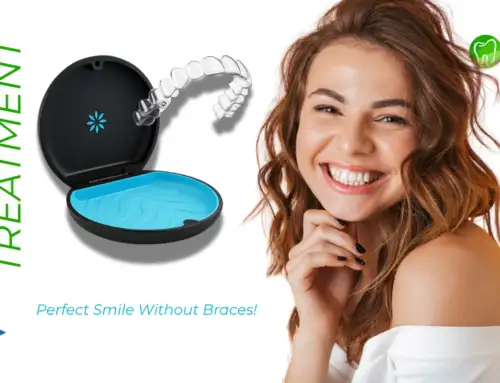“How often do veneers need to be replaced?” is an important question for anyone considering dental veneers. Understanding the lifespan of veneers is crucial for making informed decisions about dental care and investments in one’s smile.
Dental veneers are thin shells made of porcelain or composite resin. They are bonded to the front surface of teeth to improve their appearance. While veneers are durable and can last for many years, they are not indestructible. Several factors can influence how often veneers need to be replaced, including the quality of the materials used, oral hygiene practices, dietary habits, and regular dental care.
In this blog, we will look into these factors to provide you with a comprehensive understanding of when and why veneers may need to be replaced.
How Many Times Can Veneers be Replaced?
Are you considering dental veneers to address imperfections like chipped, cracked, discolored, uneven, or broken teeth? Your dentist may offer various types of veneers tailored to your specific needs. However, before opting for porcelain, composite resin, or laminates, it’s crucial to understand the importance of proper care to avoid premature damage and the need for replacement. As you explore veneer options, you may wonder: How can I identify signs that my veneers require replacement?

Signs That Your Veneers Are Wearing Out
Signs that your veneers are getting old can vary based on the type you have. Porcelain veneers usually last longer, around 10 to 15 years, because they’re really strong. But composite resin veneers and laminates might need changing sooner because they can chip, crack, or change color.
Even though porcelain veneers resist stains, they might still get chipped or cracked eventually. No matter the type, if you feel rough edges on your veneers causing discomfort in your mouth, it’s a sign they need replacing. Some types might need changing every 5 to 7 years, while porcelain ones can last 10 to 15 years.
How Often Do Veneers Need To Be Replaced?
Porcelain veneers mostly last for 10 to 15 years before needing replacement, while other types may have shorter lifespans due to damage or discoloration.
The decision to replace veneers depends on factors like affordability and the amount of remaining tooth enamel. Dentists’ techniques also influence replacement frequency; some remove more enamel than others during installation.
Veneers are a significant investment, so it’s essential to care for them to prolong their lifespan. Replacement requires healthy tooth enamel, making proper maintenance crucial to avoid the need for costly replacements.
How can you Increase the Life of Veneers?
To increase the lifespan of veneers, follow these tips:
- Practice good oral hygiene: Brush and floss regularly to avoid plaque buildup and maintain the health of your veneers and natural teeth.
- Avoid hard foods: Avoid biting or chewing on hard objects like ice, pens, or fingernails to prevent damage to the veneers.
- Wear a mouthguard: If you grind your teeth or participate in contact sports, wear a mouthguard to protect your veneers from damage.
- Avoid staining agents: Minimize consumption of foods and drinks that can stain your teeth, like coffee, tea, wine, and tobacco products.
- Visit your dentist regularly: Schedule routine dental check-ups to monitor your veneers and address any issues early on.
- Follow post-procedure care instructions: After getting veneers, adhere to any specific care instructions provided by your dentist to ensure their longevity.
Conclusion
Understanding “How often do veneers need to be replaced?” is crucial for maintaining a healthy and beautiful smile. By knowing the signs of veneer wear and going for regular dental check-ups, you can ensure your veneers remain in optimal condition for years to come. Remember, the longevity of your veneers depends on proper care and maintenance.
Ready to discuss your veneer options and schedule an appointment? Contact Vital Dental Center in Margate, FL, today to explore your options. New patients can call (954) 406-7561 while existing patients can reach us at (954) 975-9779.
FAQs
Depending on the material, like porcelain, which lasts up to 15 years with good care, replacements may only be necessary a few times in your lifetime.
Inadequate oral hygiene can result in cavities forming around or beneath veneers. Food remnants and oral bacteria may cause enamel decay and cavities despite the presence of veneers.
By the 10-year mark, you might observe increased wear and alterations in your veneers’ appearance. This may entail slight discoloration, chipping, or minor edge wear. It’s advisable to discuss maintenance and potential replacement options with your dentist.
If you don’t replace veneers, they may separate from the tooth, allowing bacteria to penetrate. Eventually, the tooth underneath may decay. Loose veneers can fall out, leaving teeth vulnerable. Staining and discoloration may occur, resulting in a dull, yellowish smile.





